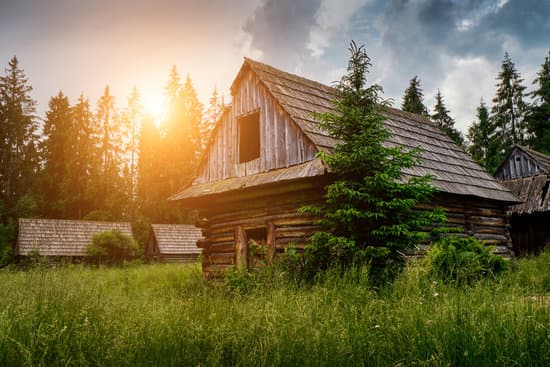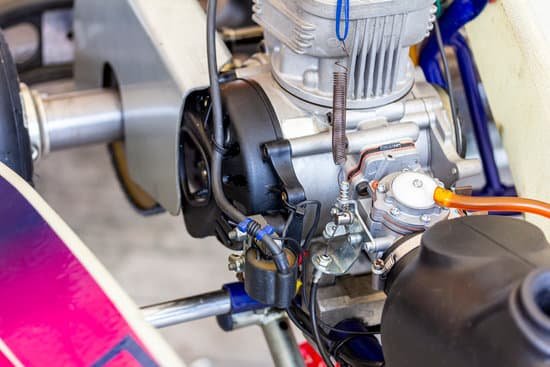A paint job always seems like a good idea. Whether you want to renew looks or make bold changes- a fresh coat of paint always does the job. They also add more personalization to objects. So, what about painting your log cabin?
Besides the look and aesthetic, does a paint job protect your cabin from weathering? The aesthetic aspect of a paint job is a personal choice. However, the concern about weathering is a general query. So, how effective is paint in protecting the logs from weathering?
The answer is not at all. Unfortunately, paint does not protect wooden logs. It might be effective elsewhere, but it is not when it comes to log cabins. The alternative? Stain your log cabin.
Why Can’t You Paint a Log Cabin?
Technically, you can paint your log cabin. Whether it is for the aesthetic or some other purpose, you can always do it. However, they might harm your log cabin and prevent it from lasting long. Why then waste your money unnecessarily? Read on to find out how you can ensure the longevity of the wooden logs.
There is a major difference between logs and other typical building materials. You can even paint dimensional lumber like 2x4s. This is because wooden logs retain moisture and in substantial amounts, too.
The reason for this is that logs are much thicker as compared to dimensional lumber. They are made of complete trees and not simply a cross-section as dimensional lumbers usually are. So, from the very beginning, they contain moisture. Although a drying period of a year is considered appropriate, it does not completely get rid of the moisture.
Even after 20 or so years, your logs might not be completely dry. They constantly absorb moisture from the surrounding air. Understandably, on the more humid days, they will absorb more moisture than usual. On the other hand, they will get drier in the dry seasons.
They might reach a steady-state depending on the environment, but they are never completely dry. So, what happens when you apply paint over them? Paint is good at both keeping the moisture inside the material or out. When you apply paint over the logs, you are preventing them from breathing.
This makes the moisture stay inside the logs for a long time. Logs must be able to breathe. Not only during their drying period before construction but also during and even after the construction is completed. If you let your logs breathe, they will remain fresh and sturdy for a longer period.
Whether it is latex paints or oil paints, they both damage wooden logs. They make your logs rot from the inside. You might ask, what about polyurethane coatings? Any coating that forms into a hard-glossy shell on the surface of your logs must not be used. It is for the same reason.
Avoid anything that will make it hard for your wooden logs to breathe. You might then wonder how to keep rain, sun, and other natural elements from destroying your logs? This can be solved if you use a good stain with a good clear coat. They will provide adequate protection while letting the logs breathe.
Do Logs Rot When Painted?
Yes, they do. As you have seen, layers of paint prevent your log from breathing and rot them from the inside out. The paint traps all the moisture inside the logs. It stays and sits there, beginning to rot.
As an example, think about a log that has been sitting on the moist ground for a long period. What do you think you will see if you roll it over? The underside of the log will be decayed and rotten. It will happen due to all the moisture that had been trapped, unable to breathe or dry.
Imagine this happening to the logs of your cabin. Even if it is just one log initially, it will start to not insulate adequately. It will get weak and might even break under the onslaught of natural elements like wind and rain. As a result, the other logs might also get affected.
What to Do If the Logs of My Cabin Rot?
If all your logs start deteriorating one by one, your cabin will soon lose structural integrity. As a result, you might even have to rebuild it from scratch. Nevertheless, if you manage to find and eliminate the rotten parts right in the beginning, there might be hope in salvaging the rest of the cabin. Make sure to replace the rotten logs as soon as possible.
It is, however, an expensive and intensive process. You have to carefully find each and every part that is rotten. Ensure you replace all of them. Even if a single part is left behind, the rot might spread to the other parts. Therefore, make sure to remove and replace all the rotten logs.
Not only do you have to spot them, but pull them out just right. You have to make accurate measurements so that you can remove the rotten part. This is a meticulous and precise process and, therefore, costs a lot. Besides, it might add up for multiple logs.
Once you have replaced them, you will have to sandblast your whole cabin. This is to remove the paint that is still present. Presumably, you would want to remove what caused the problem in the first place. Once that is done, you will have to stain your cabin from top to bottom.
Instead of going through so much hassle, you should stain your cabin from the very beginning. It also helps you save up on costs.
What Should You Do Instead of Painting?
A great alternative is to stain your log cabin. Stain works completely differently from how paint does. It does not coat your logs on the outside as paint does.
Instead, stain soaks into your log. Not only does this give it a nice color, but it also preserves the natural grain of the existing wood.
Advantages of Stain
The stain has several advantages over paint when it comes to log cabins. Take a look at them below.
Does Not Seal Moisture
The stain does not seal moisture either out of the log or inside it. What it does is repel unnecessary moisture away from the log. This can be from rain, frost, dew, and such. This makes the wood resilient against these elements while giving it room to breathe.
It does this without sealing off the log. At the same time, it allows the moisture that is trapped inside the logs to be let out. There is no scope for any more moisture seeping into the logs. Therefore, there are more chances for the logs to get drier.
Leads to Dry Logs
Dry logs mean there are fewer chances of them rotting. Logs are natural and organic materials. It is inevitable that they will decompose. However, they usually last for years if well-maintained. But moisture, if it manages to stay inside the logs for long, hastens up the process of rotting.
As we have seen, stain neither lets more water accumulate nor stifles the wood. This is why it is a better option to maintain your log cabin in the long run.
What Stain to Use?
Now that you know how good of an option stain is, it is time to know what stain to use. Which stain is better? Take a look to find out.
There are two types of stains available for use on log cabins- oil-based and water-based. Besides this, you must also take care to consider the climate of your location. Sometimes, stains that might work well in dry climates may lead to mold formation in more humid locations.
I, therefore, recommend that you buy your stain from local outlets. Even if you buy online, make sure to get one that is popular in your area.
You can run a quick Google search to find the best stain for your climate. However, I recommend you contact a local log home builder and ask for their advice. They usually know the answer to the best stain for your region.
Plus, it is also very recommended that you get a stain specially made for log cabins. They will be the best in terms of performance. Usually, shelf-brand stains that are available at local stores are not as effective or durable as the ones from top brands. Although this is not always true, when it comes to log cabin stains, you get what you are paying for.
Nevertheless, the following are some good brands of log stains.
- Sansin
- Sikkens
- Permachink
- Sashco
- TWP
Besides these, Sherwin Williams also makes a durable and affordable log stain.
Endnotes
A stain is by far the better option. It will lend you the required aesthetic without ruining the quality or the condition of your logs. Paintjobs are themselves costly and will also incur more costs in the long run. For a more detailed breakdown of the top stain manufacturers, keep a lookout!






